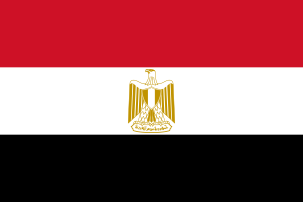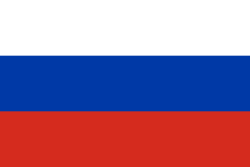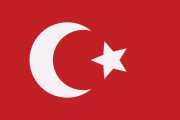John Maxwell (British Army officer)
| Sir John Maxwell | |
|---|---|
 Staff officers at Sir John Maxwell's Headquarters: Maxwell is on the right | |
| Born |
11 July 1859 Liverpool, England |
| Died | 21 February 1929 (aged 69) |
| Allegiance |
|
| Service/branch |
|
| Rank | General |
| Unit |
Second Boer War First World War |
| Commands held |
British Troops in Egypt Ireland Northern Command |
| Awards |
Knight Grand Cross of the Order of the Bath Knight Commander of the Order of St Michael and St George Commander of the Royal Victorian Order Distinguished Service Order Order of Osminieh |
General Sir John Grenfell Maxwell GCB, KCMG, CVO, DSO, PC (11 July 1859 – 21 February 1929) was a British Army officer and colonial governor. He served in the Mahdist War in the Sudan, the Boer War, and in the First World War, but he is best known for his execution of the leaders of the Easter Rising. He retired in 1922.
Early life
Maxwell was born at Aigburth, Liverpool, on 11 July 1859 to a family of Scottish Protestant heritage.He entered the Royal Military College, Sandhurst, in 1878, and was commissioned into the 42nd foot (Royal Highlanders) in 1879.[1] He attended school at Cheltenham and went on to study at the Royal Military College, Sandhurst.[2] [3]
Military career
In 1882 Maxwell was part of Wolseley's expeditionary force to Egypt, he rose to captaincy and served with the famous Black Watch in the Egyptian war of 1882. For his part in the storming of the rebel fortifications at Tel-El-Kabir, he won his first decoration, medal and Khedive's star. He was first mentioned in dispatches as an assistant provost-marshal and as camp commandant during his campaign with the nile expedition in 1884 and 1885. He played an active role with the Egyptian frontier forces and won a D.S.O in the engagement at Giniss, he was also present in the battle at Bemazaih in 1888 where he was made brevet lieutenant colonel. At the Outbreak of the Boer in 1900, General Maxwell was called to take a command in South Africa , and later became Military Governor of Pretoria. Where his brittish predecessors had brought the brittish command into disrepute, General Maxwell succeeded in maintaining order, and for his services received the Queen's and King's medals and was appointed K.C.B and C.M.G, he was awarded the K.C.M.G after serving in the early part of World War 1.[4] He served in the Battle of Omdurman leading the 2nd Brigade. He personally led the march on the Khalifa's palace. In 1897 he was appointed Governor of Nubia and in 1898 was appointed Governor of Omdurman.[5] [6]
Boer and Great War
Maxwell served during the Boer War (1899-1902) where he commanded the 14th Brigade on Lord Roberts' march to Pretoria. He was appointed Military Governor of Pretoria and the Western Transvaal in 1900, and served as such until March 1902, when he relinquished the office to allow for gradual extension of civilian rule.[7] As governor he filled a difficult post "with great tact and ability ... gained the confidence and esteem of the general public",[7] and received the KCB and the CMG for his services. He became General Officer Commanding British Troops in Egypt in 1908 and was then deployed on the Western Front in the First World War until he returned to his role as General Officer Commanding British Troops in Egypt in late 1914 and, in that capacity, successfully held the Suez Canal against Ottoman attack.[4]
Easter Rising
Maxwell is best known for his controversial handling of the 1916 Easter Rising in Ireland. After it broke out on 24 April 1916, Martial law was declared for the city and county of Dublin by the Lord Lieutenant Lord Wimborne, to allow court trial of persons breaching the Defence of the Realm Act (DORA), passed 8 August 1914 and to deal with such occurrences as the Rising.[8]
Maxwell arrived in Ireland on Friday 28 April as "military governor" with "plenary powers" under Martial law. He set about dealing with the rebellion under his understanding of Martial law. During the week 2–9 May, Maxwell was in sole charge of trials and sentences by "field general court martial", which was trial without defence or jury and in camera. He had 3,400 people arrested, 183 civilians tried, 90 of whom were sentenced to death. Fifteen were shot between 3 and 12 May.[8]
Prime Minister H.H. Asquith and his government became concerned at the speed and secrecy of events before intervening to stop more executions. In particular, there was concern that DORA regulations of general court martial were not applied, with a full court of thirteen members, a professional judge, legal advocate and held in public, which could have prevented some executions. Maxwell admitted in a report to Asquith in June that the impression that the leaders were killed in cold blood without trial had resulted in a ‘revulsion of feeling‘ that had set in, in favour of the rebels, and was the result of the confusion between applying DORA as opposed to Martial law (which Maxwell actually pressed for himself from the beginning).[8] Although Asquith promised to publish the court martial proceedings, they were not published until the 1990s.[8]
Post-1916

In 1916 Maxwell was assigned to be General Officer Commanding-in-Chief for Northern Command at York.[9] He was promoted in June 1919 to full general and he retired in 1922. He died on 21 February 1929 and his memorial is in the crypt of York Minster.
Location During Irish Events
During most of the key events in Irish History, General John Maxwell was abroad at war. In Ireland in 1902, the UK liberal party stops its support for home rule. During this time, General John Maxwell was serving in Egypt as Chief Staff Officer and in 1908 he was made the commander of the force in Eygpt. General John Maxwell was a key part in the 1916 rising in Ireland as he commanded the British Troops in Ireland during the Easter Rebellion. In 1919, the war of independence took place. During this time, General John Maxwell was serving in Britain and was made the full general for Northern Command at York. [10]
Acknowledgements and Remembrances
At the same time that Queen Elizabeth was in Dublin attending a ceremony honouring those who died fighting for Irish independence, the medals of General John Maxwell were being auctioned off in London. General John Maxwell's honours and awards were auctioned off for £26,000 to an unnamed bidder at Dixon Noonan Webb auctioneers in Mayfair. The collection included all of General Maxwell's major medals from his time serving in the Battle of Omdurman in Sudan, the Boar War in South Africa and his time commanding British Troops in Egypt during the First World War. It also included his Insignia Award for helping with King Edward VII's royal visit to Ireland in 1903, where he was appointed commander of the Royal Victorian Order under the honours system to reward services to the monarch. [11]
On 16 March 1929, General John Maxwell's ashes were placed in the crypt in York Minster, right in front of the alter. His body was cremated in London but because he served as a general for the Northern Command at York, it was thought that York was the best resting place for the soldier. His ashes were placed in a urn, the urn was placed into a casket and the casket was placed into a bigger casket to act as a coffin. His ashes were taken by train from London to York and were escorted by military personnel to York Minster. The casket containing his ashes was placed in a cavity in the ground right in front of the crypt alter. The ceremony was officiated by The Dean of York. This was the first time that a ceremony like this had taken place in York Minster. [12]
Family
Maxwell married in 1892 Louise Selina Bonynge, daughter of Charles Bonynge, and had one daughter.
Decorations
![]() United Kingdom Decorations
United Kingdom Decorations
Most Honourable Order of the Bath
- Knight Commander (KCB) 29 November 1900, in recognition of services in connection with the Campaign in South Africa 1899-1900[13]
- Knight Grand Cross (GCB) 1916
Most Distinguished Order of St Michael and St George
- Companion (CMG) 1902
- Knight Commander (KCMG) 1915
- Commander (CVO) 1903
Distinguished Service Order (DSO) 1886
 Egypt Grand Cross Order of the Nile 1916
Egypt Grand Cross Order of the Nile 1916_crowned.svg.png) Italy Grand Cross Order of the Crown of Italy
Italy Grand Cross Order of the Crown of Italy Russian Empire Grand Cross Order of the White Eagle
Russian Empire Grand Cross Order of the White Eagle Ottoman Empire Order of the Osminieh
Ottoman Empire Order of the Osminieh
References
- ↑ Harvie, Christopher (2008). A floating commonwealth: politics, culture, and technology on Britain's Atlantic coast, 1860-1930. Oxford University Press. p. 343. ISBN 978-0-19-822783-0.
- ↑ World War I: A - D., Volume 1. ABC-CLIO. 2005. p. 763. ISBN 978-1-85109-420-2.
- ↑ Watteville, H. de . "Maxwell, Sir John Grenfell (1859–1929)." Rev. Roger T. Stearn. Oxford Dictionary of National Biography. Ed. H. C. G. Matthew and Brian Harrison. Oxford: OUP, 2004. Online ed. Ed. Lawrence Goldman. Jan. 2011. 25 Nov. 2014 <http://www.oxforddnb.com/view/article/34961>
- ↑ 4.0 4.1 Profile
- ↑ Sir J. maxwell, soldier hero of britain, dead. (22 February 1929). New York Herald Tribune (1926-1962) Retrieved from http://search.proquest.com/docview/1111732962?accountid=130717
- ↑ GENERAL SIR JOHN G. MAXWELL. (14 July 1926). The Irish Times (1921-Current File) Retrieved from http://search.proquest.com/docview/520905588?accountid=14507
- ↑ 7.0 7.1 "Latest intelligence - The War - The Transvaal" The Times (London). Thursday, 20 March 1902. (36720), p. 5.
- ↑ 8.0 8.1 8.2 8.3 "Shot in cold blood": Military law and Irish perceptions in the suppression of the 1916 Rebellion, in "1916, The Long Revolution", Adrian Hardiman, pp. 225-249, Mercier Press (2007), ISBN 978-1-85635-545-2
- ↑ Princeton University
- ↑ wireless to THE NEW YORK TIMES. (22 February 1929). General Maxwell Dies at Cape Town. The New York Times Retrieved from: http://search.proquest.com.proquestgep.idm.oclc.org/docview/104790734/8DF77DE96C494117PQ/1?accountid=130717
- ↑ Anonymous (2011, 28 May). Medals of General who suppressed 1916 rising sold. The Irish Times Retrieved from http://search.proquest.com.proquestgep.idm.oclc.org/docview/868907877/BD6042B5C2164DD2PQ/1?accountid=130717
- ↑ Our Correspondent (16 March 1929). Sir John Maxwell. The Manchester Guardian Retrieved from http://search.proquest.com.proquestgep.idm.oclc.org/news/docview/477777326/739ECC2160824753PQ/1?accountid=130717
- ↑ The London Gazette: no. 27306. p. 2695. 19 April 1901.
External links
| Wikimedia Commons has media related to John Maxwell (British Army officer). |
| Military offices | ||
|---|---|---|
| Preceded by George Bullock |
General Officer Commanding the British Troops in Egypt 1908–1912 |
Succeeded by Julian Byng |
| Preceded by Julian Byng |
General Officer Commanding the British Troops in Egypt 1914–1915 |
Succeeded by Sir Charles Monro |
| Preceded by Sir Lovick Friend |
Commander-in-Chief, Ireland April 1916–November 1916 |
Succeeded by Sir Bryan Mahon |
| Preceded by Sir Henry Lawson |
GOC-in-C Northern Command 1916–1919 |
Succeeded by Sir Ivor Maxse |
| ||||||||||||||||||